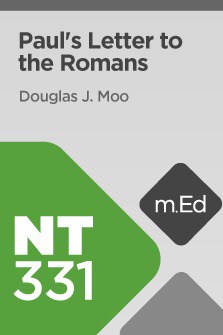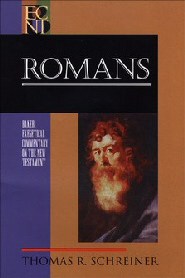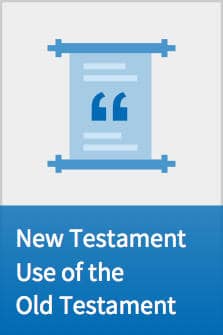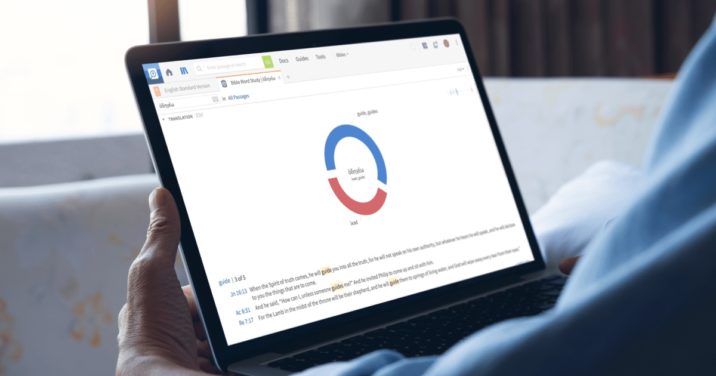It’s no wonder Romans is one of the most well-known, beloved books of the Bible. Few passages give as clear and detailed explanations of grace, justification, and Christian ethics as Romans, and thus, it’s a book pastors often preach expository sermons on.
Furthermore, the book of Romans was a catalyst for the Protestant Reformation. In 1517 then-monk Martin Luther was reading Romans when he began to understand righteousness in tandem with saving faith; that is, he began to understand grace. As a result, Luther helped the church rediscover salvation as a result of grace through faith in Christ. And even though it’s been over 500 years since then, the book of Romans remains central to the Christian faith.
With the steps below, you can prepare a solid expository sermon on Romans—even an entire series on Romans—and grow spiritually in the process. (Note that if you’re looking for resources on Romans to help you prepare, you’ll find them in Expository Preaching Kits.)
- Begin with prayer
- Study Romans’ background
- Outline Romans
- Explore Romans’ key verses and central idea
- Start your research
- Write your sermon
- Preach through Romans
- Share your sermons
1. Begin with prayer.
Prayer is the most important part of sermon prep. In every moment, we need the Spirit’s power and guidance—especially when we’re preparing to preach to God’s people.
As you begin, pray that the Word will renovate your heart, that you’ll see the gospel even more clearly in your studies. Pray for the hearts of those who will hear your messages—you can’t go wrong by praying through Romans 1:8–12. And pray for God to be glorified through your work.

NT331 Book Study: Paul’s Letter to the Romans
Learn from New Testament scholar and Wheaton College professor Douglas Moo in this 10-hour course on Romans. You’ll see the background, themes, and theology behind Paul’s epistle to the church in Rome, all while reveling in the incredible gift that the book of Romans is to us today.
2. Study the background of Romans.
Understanding the background of Romans helps us read it as Paul intended. You can’t go wrong by starting with the simplest questions: who, what, when, and where.
Author: Paul
Audience: The church in Rome, both Jews and gentiles
Genre: Epistle (Letter)
Date: Probably around AD 57, during Paul’s third missionary journey
3. Outline Romans.
The outline below is from Leon Morris’ commentary on Romans, and it’s a standard way to lay out the book. Many respected commentaries follow a similar outline.
- Introduction, 1:1–15
- Thesis, 1:16–17
- The Way of Deliverance, 1:18–5:21
- The Way of Godliness, 6:1–8:39
- The Place of Israel, 9:1–11:36
- Christian Living, 12:1–15:13
- Conclusion, 15:14–16:27
Using outlines like these will help as you begin to think about how you’ll break down your sermon series.
4. Explore Romans’ key verses and central idea.
Paul’s main message in Romans centers on the doctrine of justification through faith. Throughout all 16 chapters, Paul shows how Christians’ understanding of justification impacts their faith, their worship, and their everyday relationships.
Key verses:
Sermon Workflows in Logos
There’s a feature built into Logos that takes you through the entire expository sermon writing process, from prayer to exegesis to preaching. It’s called Workflows, and the one for expository sermons is in Logos Silver and up.
See how Logos can help you plan, prep, preach, and publish your sermons.
5. Start your research.
The book of Romans is one of the most popular, most studied books of the Bible. That makes finding excellent research aids even simpler. Here are top resources:
The Epistle to the Romans (The New International Commentary on the New Testament | NICNT)
Regular price: $39.99

Douglas J. Moo, The New International Commentary on the New Testament (NICNT)
Respected New Testament scholar Douglas J. Moo’s Epistle to the Romans serves as a standard exposition of the book. In it, he contributes to the continuing debate about Paul’s teaching on issues like Jewish law and the relationship between Jews and gentiles in the people of God. He critically interacts with the new perspective on Paul, highlights Romans’ emphasis on practical divinity, and more.

Thomas R. Schreiner, Baker Exegetical Commentary on the New Testament (BECNT)
This popular evangelical commentary on Romans has been praised as a great preaching commentary. In his introduction to the second edition, Dr. Schreiner integrates recent scholarly literature on Romans while avoiding merely creating a commentary on commentaries. His perspectives on this great letter of Paul remain essentially the same, though with some updates, particularly in how he views the best way to define “the righteousness of God.”

New Testament Use of the Old Testament
Reading the book of Romans is never fruitless, but you’ll miss gold if you don’t catch its Old Testament references. With the New Testament Use of the Old Testament interactive in Logos, you can quickly discover where Paul refers to the Old Testament and then explore the context more fully.
Learn more about the New Testament Use of the Old Testament.
6. Write your sermon.
Many preachers (and writers say the same thing) recommend thinking of a specific person—or a handful of people—in the congregation who will hear a sermon, then writing the sermon with them in mind. That’s one great way to love the people with whom you’re sharing God’s Word.
Another way to care for God’s people as a preacher is to use relevant illustrations and quotes to help listeners grasp the text’s meaning. Just make sure the majority of your church will understand your illustrations and quotes. For example, a mostly female audience may not follow your meaning if you’re using an analogy from a war movie.
No matter what tactics you use as you write your sermon, the important part is knowing your audience well.
Sermon Starter Guide
When you plug your main passage into the Sermon Starter Guide, you’ll see relevant helps from your entire Logos library, from commentaries and outlines to transcripts from respected preachers.
Learn how to use the Sermon Starter Guide.
Sermon Editor
Learn more about the Sermon Editor
7. Preach through Romans.
Preaching is a ministry of speaking and listening, not manuscripting. So how do you preach winsomely, clearly, and truthfully?
8. Share your sermons.
Once the prep is done and the sermon is preached, it’s time to share your sermon online. Not only will this give you a storehouse of sermons to come back to, but they’re also valuable for prospective church visitors and devoted members who missed part of your sermon series.
Faithlife Proclaim
Faithlife Proclaim is church presentation software that builds on the work you do in Logos by helping you quickly create compelling sermon slides. Plus, Proclaim records and posts your sermon online automatically.
Conclusion
Now that you’ve seen how to plan an expository sermon on the book of Romans, you can use these tips to write expository sermons on any book of the Bible.





